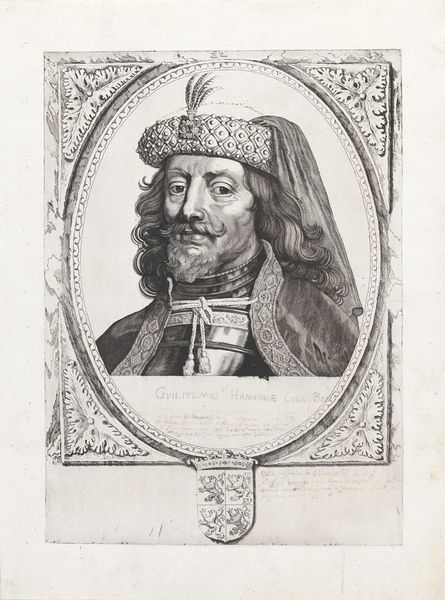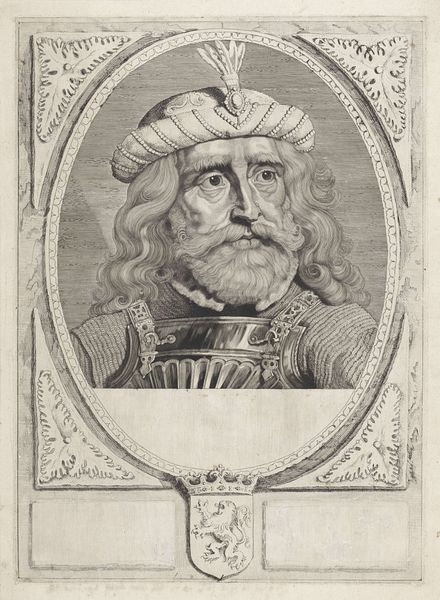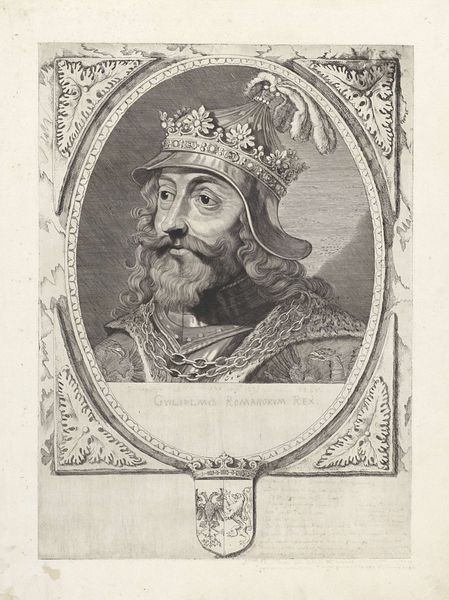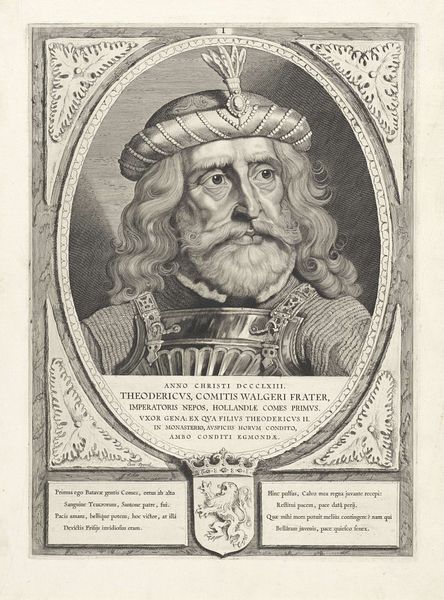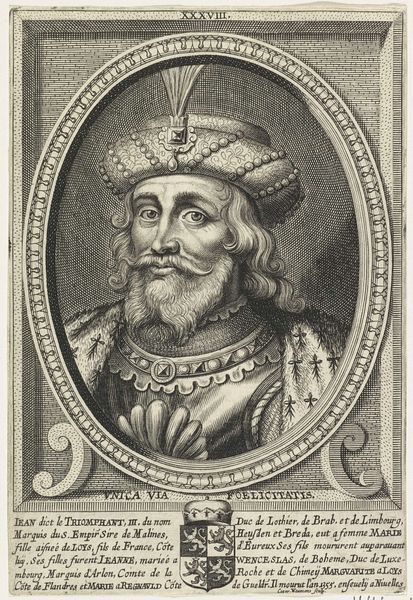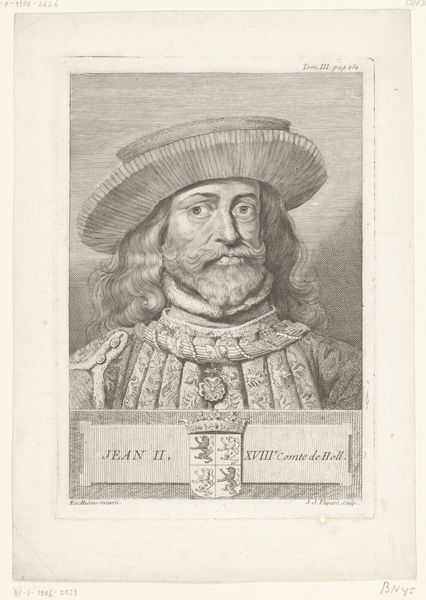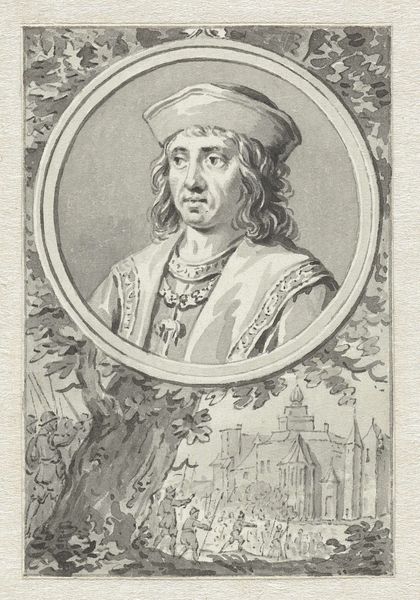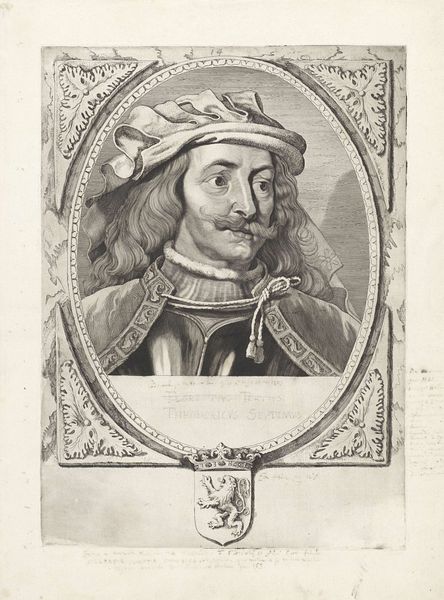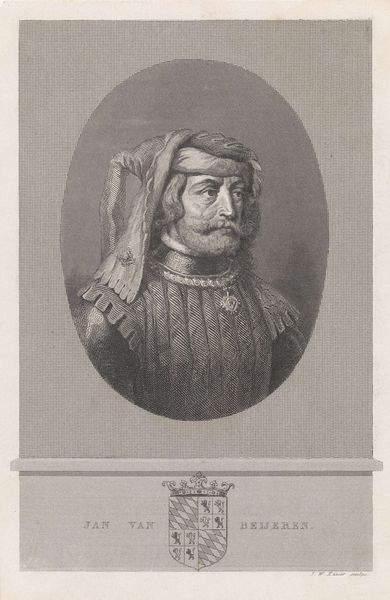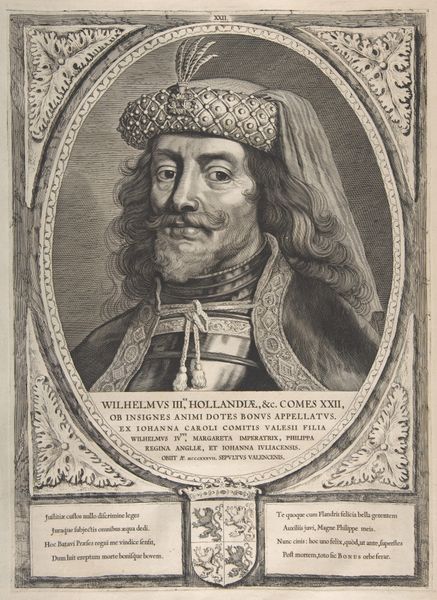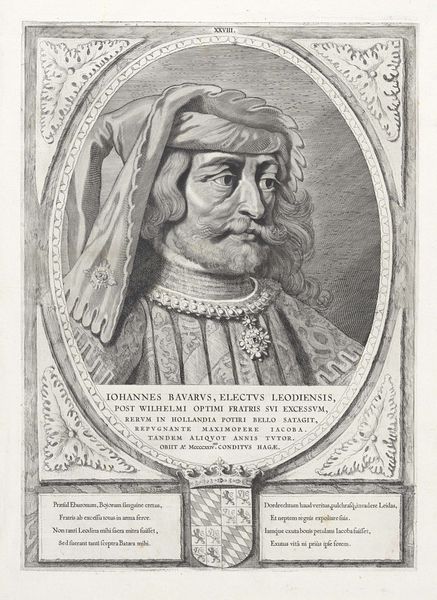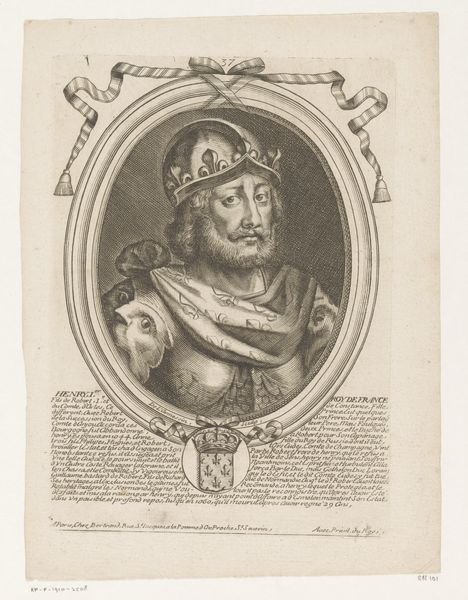
drawing, print, paper, ink, engraving
#
portrait
#
drawing
#
baroque
#
dutch-golden-age
# print
#
figuration
#
paper
#
ink
#
pencil drawing
#
history-painting
#
academic-art
#
engraving
Dimensions: height 404 mm, width 294 mm
Copyright: Rijks Museum: Open Domain
Editor: So, this is Cornelis Visscher’s "Portret van Willem V van Holland" from 1650, currently at the Rijksmuseum. It’s a drawing, or rather an engraving on paper, and the detail is incredible! I'm struck by how meticulously rendered the textures of his clothing and facial hair are. What draws your eye to this particular print? Curator: Immediately, I’m considering the socio-economic context that allowed for such a work to be created. Consider the Dutch Golden Age and the rise of a merchant class, eager for representation. The material reality of printmaking – the paper, the ink, the tools used to create the engraving - becomes significant. This isn't just an image, it's a commodity produced within a specific economic system. How do you see this portrait functioning within that context? Editor: Well, I guess it's not just art for art’s sake. It served as propaganda, even? Like, reinforcing power structures through the glorification of Willem V. It’s not a painting, though… does the fact that this is an engraving influence how it would have been circulated and received? Curator: Precisely. The printmaking process allowed for mass production, reaching a broader audience beyond the wealthy elite who could commission paintings. So we should ask, how did the democratization of image-making, through reproducible formats like prints, change the relationship between the powerful and the populace? And furthermore, how did it affect the perceived "value" of art objects in general? Think about the labor involved in creating the printing plate itself, a craft often overlooked. Editor: That makes me think about the engraver’s skill being a trade. The work isn’t *just* Visscher's artistic vision but a product of a particular skill set. Something I hadn’t thought about until now. Curator: Exactly! We often romanticize artistic genius, but a materialist approach urges us to examine the practical processes that facilitate artistic creation, recognizing the value and significance of labor. So what happens when we see art this way? Editor: Thinking about art as labor, not just "inspiration," that opens up a whole new way to appreciate its place in history. Curator: Absolutely! Hopefully it enriches your view of this portrait and indeed any artwork going forward.
Comments
No comments
Be the first to comment and join the conversation on the ultimate creative platform.
